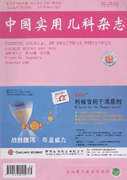To approach variance of the cellular immunological function of the confirmed cases of those children with H1N1 influenza. Methods A total of 86 confirmed cases with the novel H1N1 influenza A virus infection,including critical group and severe group
,were diagnosed according to the criteria of the Center for Disesse Control and Prevention of China from October 2009 to January 2010 in our department . Their cellular immunity function were tested with flow cytometry,and the lymphocyte subsets of 23 children in the Department of Surgery were set as the control group. Results Compared with group,percentage of CD3+,CD3+CD4+,CD3+CD8+ subsets decreased obviously in critical group and severe group,with no significant variance between them; percentage of CD19+CD23+,CD3-CD19+ subsets were presented as control group > severe group > critical group,with obvious statistical variance with each other; percentage of CD3-CD16+CD56+ decreased remarkably in group severe group; however,no statistical result was found with the ratio of CD4+ /CD8+ among all the groups. Conclusion In Suzhou,children with the pandemic (H1N1) 2009 virus infection have obvious disorder in their cellular immunity function. T lymphocytes are extensively depressed early in the course;B lymphocytes are involved in the virus clearance;decrease of percentage of NK cells has correlation with those critical cases.

